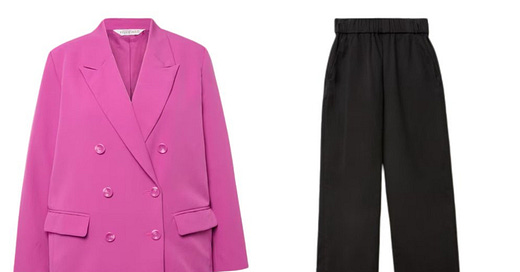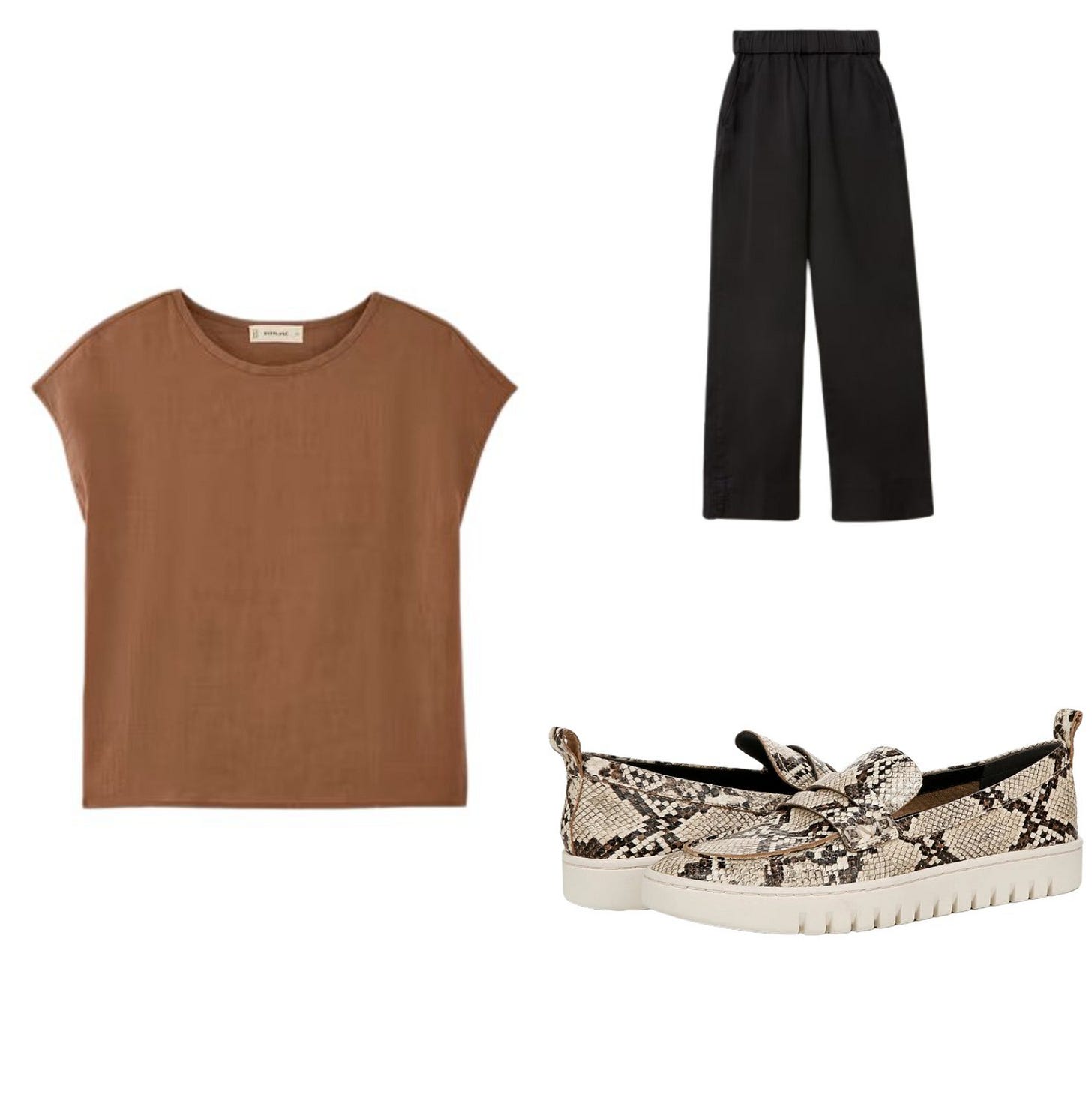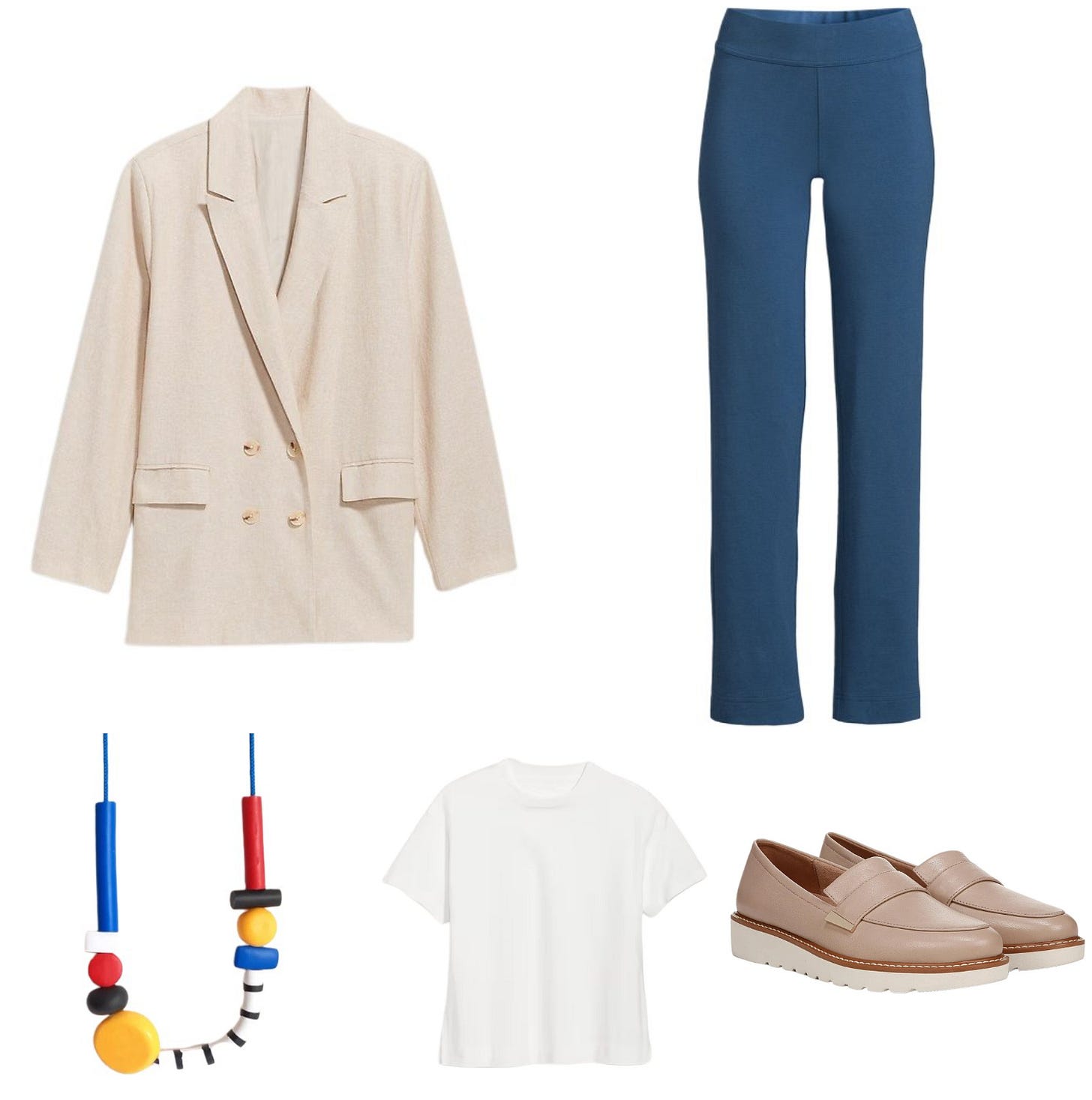is “professionalism” just coded white supremacy?
answering a reader's question in this month's Style AMA
The question:
“My question would be how to juggle personal style in settings where you have to adhere to rules and guidelines. I have to look ‘professional’ at work becaues of the dress code, but also because it makes sense professionally for a lot of career related reasons. Until I get to a certain level of seniority I have to accept that this is what it is. I truly hate professional clothes and they are never made or cut for my body shape. Even though I know the rules I never feel like I can get it right while honoring my personal style. It is truly a struggle to have personal style within the bounds of someone else’s rules (that you don’t agree with), but I spend the majority of the time I am ‘dressed’ in business casual clothes so I also want to be able to express my style and feel confident.”
I have gotten some verison of this question multiple times in my ask me anything threads. It always felt too big to hold, but I’m going to give it my best shot.
As this reader alluded to, first we have to talk about this idea of “professionalism” as a construct. I’d never actually looked up an official definition for professionalism, so I was curious how it would be worded. Imagine my shock when the definition made no mention of appearance.
So the real meaning is about the actual quality of your work! If only that were true. Unfortunately, in practice, professionalism means a certain behavior of appearing to be completely focused on your work, without any outside complications or emotions to distract you and your appearance should be neat, tailored, tidy, unobtrusive, and “respectful”.
This definition from Wikipedia reflects the more common usage:
“Professionalism is a set of standards that an individual is expected to adhere to in a workplace, usually in order to appear serious, uniform, or respectful. What constitutes professionalism is hotly debated and varies from workplace to workplace and between cultures. Professionalism is typically defined as a mix of professional ethics and dress code.”
So, what are some of the characteristics of “business casual” or “formal” business dress for women? We can all picture it, right? Suits, button down shirts, other tailored clothing items, heels, muted colors, “tamed” hair, and subtle makeup. Basically, we should all strive to look like a white man.
Suits are a direct representation of colonialism, just a form of what Europeans who stole land were wearing, and is now ingrained to such an extent that African dress in the government is being banned in…African countries.
Business dress doesn’t take into account a spectrum of genders.
Tailored clothes work best on (and are more easily available for) bodies with few curves and lumps and bumps.
They are often uncomfortable when sitting for long periods of time, and expecting bodies to submit to this and other restrictions is ableist.
Tailored clothes cost more money, see: Cori Bush having to buy a whole new wardrobe before she’d even begun being paid for her job.
Heels elongate the leg, getting us closer to tall and thin. They’re also uncomfortable.
“Polished” hair means taming anything that isn’t straight hair.
Tema Okun, who first wrote about white supremacy culture in 1999, defines it as
“the widespread ideology baked into the beliefs, values, norms, and standards of our groups (many if not most of them), our communities, our towns, our states, our nation, teaching us both overtly and covertly that whiteness holds value, whiteness is value.”
These standards of professionalism are meant to move us up the ladder of body hierarchy in order to gain proximity to whiteness. Because whiteness holds value. Professionalism is coded white supremacy.
Last week, I went to see a client completely bare faced. I would have never felt comfortable doing this in the past, or with some of my clients, who expected me to show up perfectly, to be the paragon of style else I lose their respect. Did it help that I was going to help a queer woman try on suits for her wedding? Probably. Did it help that I carry white privilege, thin privilege, pretty privilege? Absolutely.
Unlike me, many others aren’t allowed to take these liberties. Mark Zuckerberg can wear a hoodie, Trayvon Martin could not. John Fetterman can wear shorts (well, not anymore), but female legislators in my home state of Missouri can’t wear sleeveless tops. My friend literally feels unsafe if she isn’t dressed professionally.
If you might be punished at work and are afraid to lose your job or risk advancing like the reader, you do not have the freedom to ignore these cultural conventions. Even women who don’t subscribe to these standards can be penalized when they’re trying to protect a more marginalized person, like my social worker client who argues on behalf of foster children in court.
It is up to those of us with that privilege to continue to push the boundaries of these standards, so that others can come behind us without fear of harm.
As fashion historian Dierdre Clemente says regarding the ridiculous situation surrounding the Senate dress code:
“As a fashion historian, I’ve heard this tune before. It’s the same one sung by college administrators in the late 1950s, when women wanted to wear pants to the campus cafeteria. And I could hear the chorus of befuddled office managers who wanted to ban polo shirts in the early 1990s, just as Casual Fridays revolutionized what people wear to work.
The people living through these changes often consider them devolution rather than evolution. An old guard steps forward to protect the sartorial standards of a previous time by using terms such as ‘respect’ and ‘tradition’. They might be able to stanch the shift, as the Senate seems to have done. But time and again, their efforts to regulate attire ultimately end up failing.
As sartorial standards change, what people wear in public becomes ground zero for hashing out new ideas of race, class, and gender. Most often, wealthy white men are the arbiters of ‘appropriate’ and ‘inappropriate.’
Fashion is born of culture, and culture is dynamic.
And cultural forces are almost impossible to beat back.”
Let’s get back to the question of HOW you actually do this. How can you meet the level of dress that’s required of you without sacrificing your comfort, physical needs, or personal style? How can we appear to play the game while rejecting the rules?
Despite everything I’ve outlined above, we are lucky that we are currently enjoying the least restrictive women’s clothing of the past few thousand years. We have miracle fabrics that stretch and wick sweat and conform to your body instead of your body conforming to them.
In general, we want to spend as little time and energy fitting ourselves into these standards as we can, so I recommend keeping your “uniform” as simple as possible. Here are a few other tips:
Wear as many items as possible that look professional but are actually made out of athletic wear fabric.
Elastic waistbands are your friend.
Choose one area of your wardrobe that you will use to express your personal style. Maybe your base is a white tee and black pants every day, but you have a collection of funky blazers, or wild shoes, or awesome jewelry.
If you branch out in silhouette and wear some interesting design shapes, keep the palatte neutral. If you opt for bright color, keep the silhouette traditional.
Remember, spending less time or money or energy on our appearance doesn’t mean we’re less good at our job. Let’s hope for a future where we’re acknowledged as human beings instead of productivity machines and appreciated for the work we do instead of what we wear.
What do you think?
Access to my recommended item links is usually a paid subscriber perk, but I wanted to share for everyone today. Go here to see all my picks.
If you love seeing items I recommend, unflattering now has a membership level!
You’ll get access to tons of stuff like my mini-courses, my choosing items for you specifically, and my spreadsheet of over 200 retailers. The price is $120/year until June 1, when it will increase to $150/year.













In 2019 my body began a major shift and I was panicked about dressing myself. I didn't have money for new clothes. My friends came to the rescue going through their closets searching for anything that was remotely my size. We cobbled together a professional wardrobe, but I remember being very angry that one employee who outranked me by several steps on the corporate latter wore the same two pair of jeans rolled at the ankle, loafers worn sock-less for all the years I'd been there. How was it that he could wear this very casual denim uniform daily while I was scrambling to look a certain professional way, complete with heels? When the pandemic hit I threw out everything and for the first year wore nothing but flared yoga pants. Five identical pair. I still get resentful thinking about the double standard.
thanks for sharing the links -- FYI the Old Navy pixie blazer is on sale now for $39.99 -- a sensible versatile stylish "professional" piece! I got the high-waisted pixie straight angle pant as well (sale price $28), can't beat that for a pulled-together look. Size availability looked good up to size 30 in the pant, in various colors.